Pashtun tribal flags
In the past, each section or a sub-tribe of a Pashtun tribe used to have its own unique flag or standard (‘bairagh’ بیرغ in Pashto). For example each of the eight sections of the Afridi tribe had their own particular flags representing them.
The Pashtun tribal flags were triangular in shape. They were made by Pashtun women. The designs on the flag were commonly worked in cotton or more rarely embroidered in silk. In general, they were not ornamented with kalima or a verse from Quran.
During the wars, the Pashtun lashkars were accompanied by flags which formed rallying points for respective clans in battle, and which were not allowed to fall into the hands of the enemy. The flag-bearer, elected by the jirga for that role, was always the bravest man in the clan, and he was responsible for its safety during peace and war. The flag-bearer used to march in the van of the lashkar.
A Pashtun army consisting of many clans marching with tribal flags was a sight to behold in pre-modern times. Anandram Mukhlis, who witness the Pashtun army of Ali Muhammad Khan Rohilla in 1745 AD, writes in his diary:
“Every soldier in his (Ali Muhammad Khan’s) army, whether horse or foot, carries a musket; every commander of ten or a hundred infantry has his own banner of particular coloured cloth, and these are carried at the head of cavalcade in marching, so that it looks as if a flower garden is marching with them.” (Safarnama Mukhlis, p-261)
The war flags of Umra Khan of Jandul and Sartor faqir
The war flags of Umra Khan of Jandul and Sartor faqir had insignia of blood-red hand upon green field. It symbolized the Prophet Muhammad’s hand.
The following image from “London Illustrated News” (issued on 18th September 1897) is captioned as follow:
“Chief among the fanatical mullahs, or priests, who have been stirring up the tribesmen on the North West Frontier of India is the Mad Mullah of the Swat valley. His standard bears the same insignia as did of Umra Khan in the Chitral campaign, namely a blood-red hand upon a green field.”
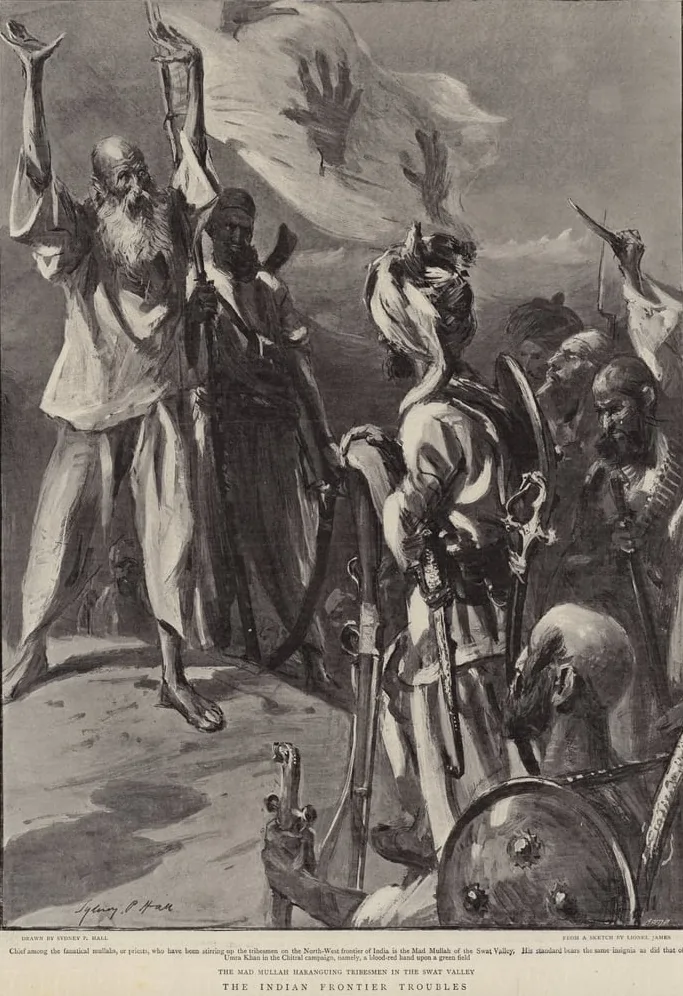
The Afridi flag of truce
The blood-red hand was noted on the white peace banner of Afridis who were making peace offerings to a British officer in 1930. The following photo is captioned as follow in “The Graphic”:
“The above picture shows an Afridi jirgah, or peace assembly, meeting a British political officer to whom a native Political is presenting the two headmen of the clan and their peace offering of a couple of goats. The tribal banner of Afridis is embroidered with a red hand.”


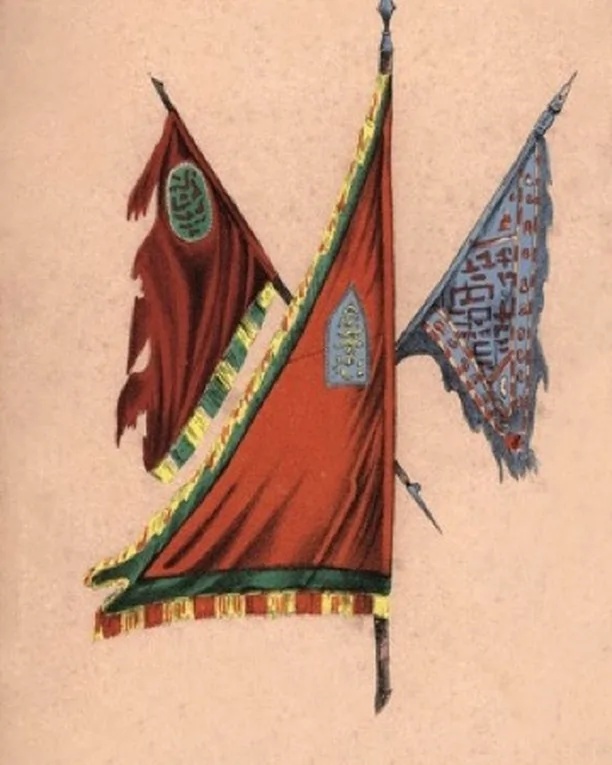
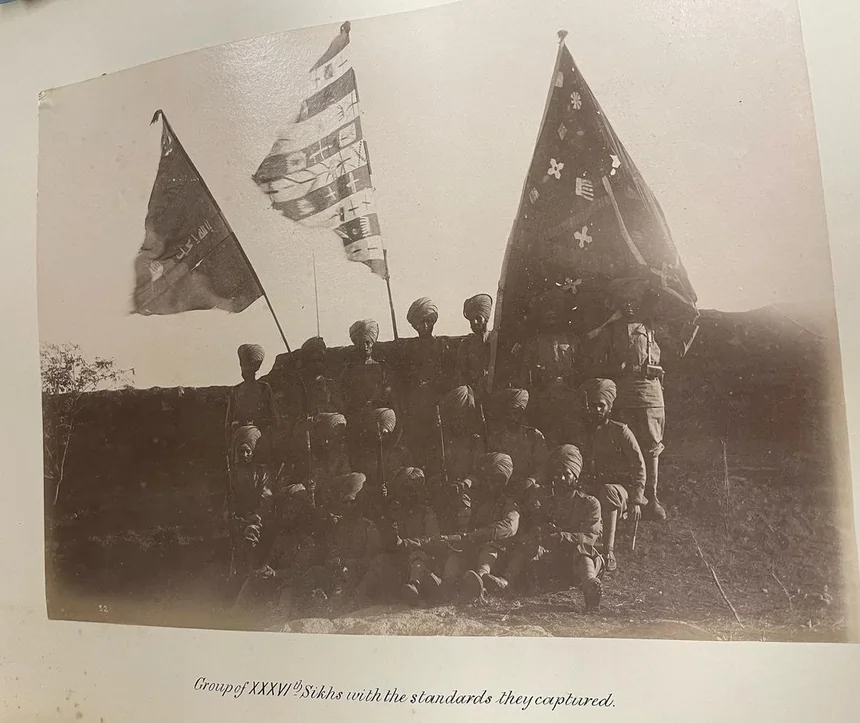
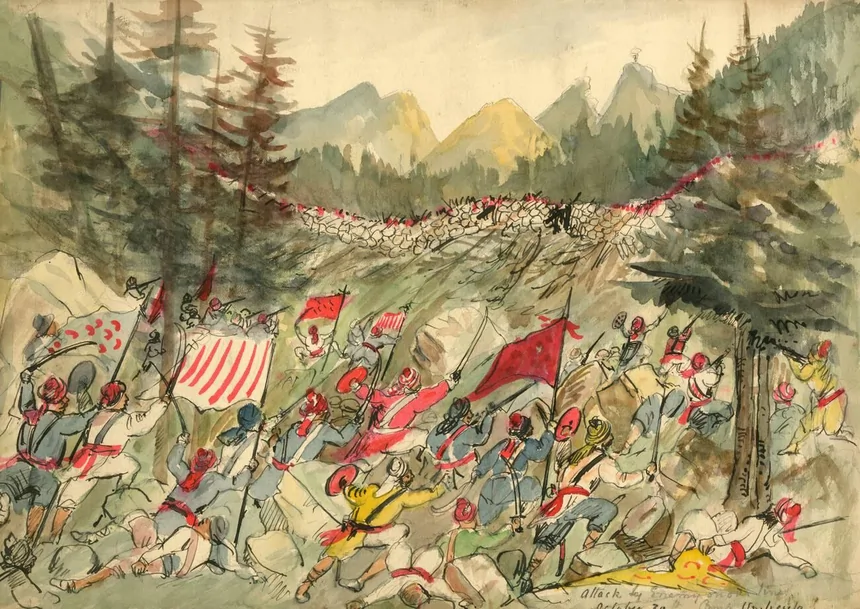
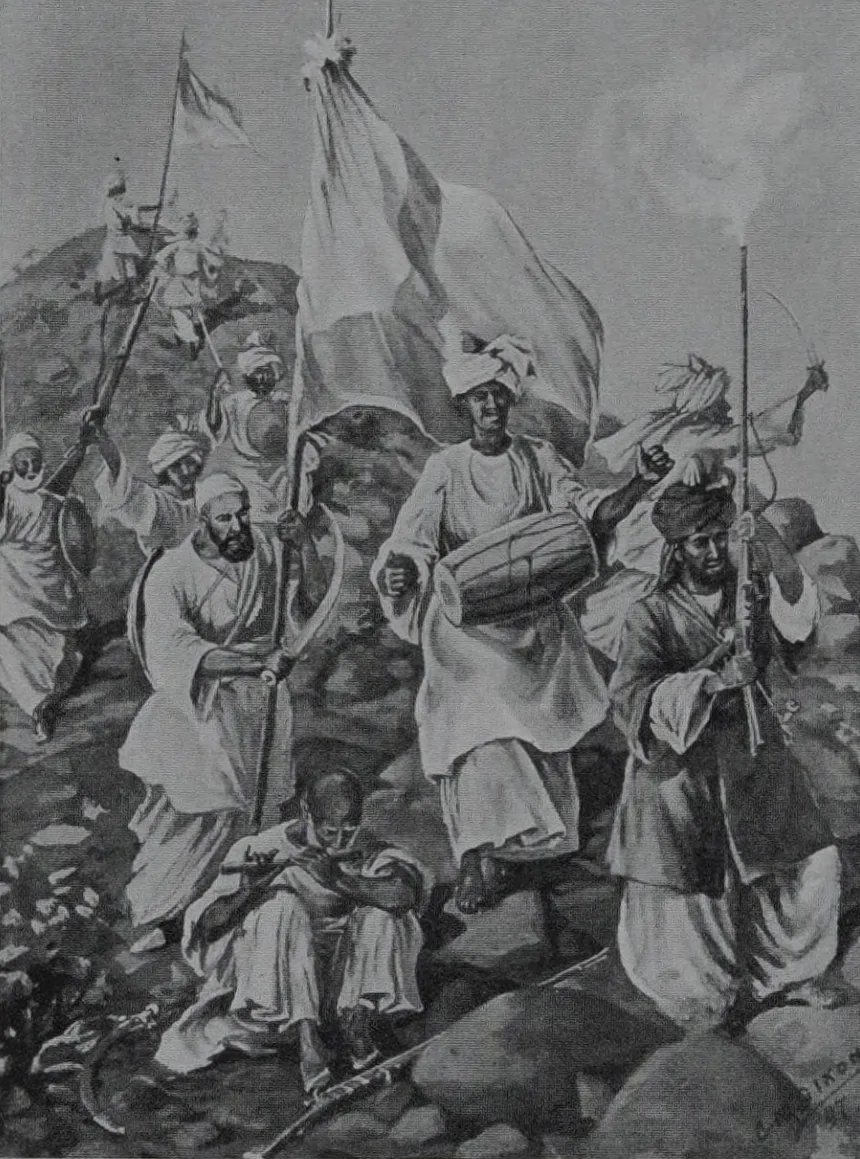


د پښتنو مسئلو ځانله ځانله بيرغونه څرګندوي چ پښتانه تلرځانله ځانله جنګيدل